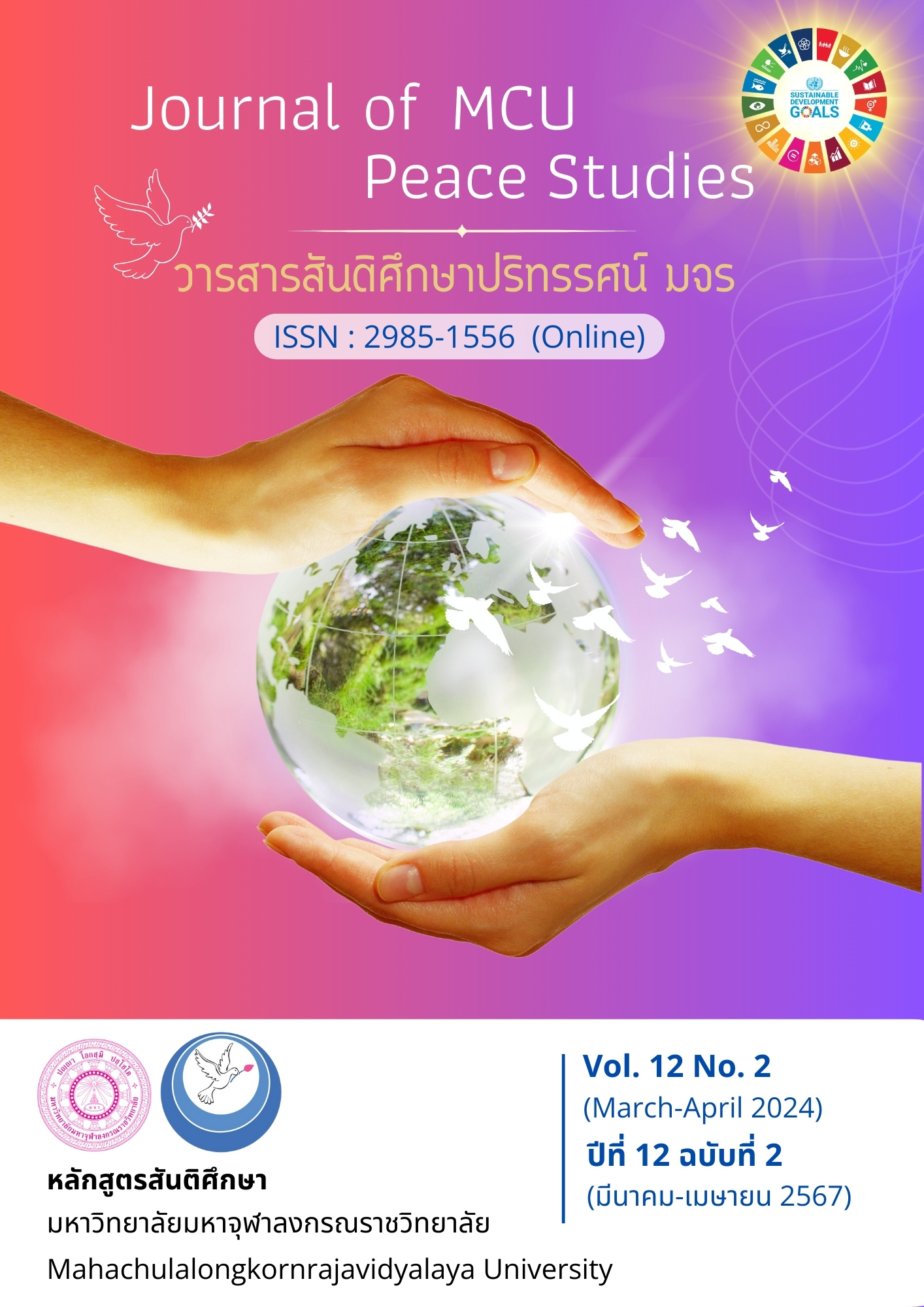An Analytical Study of the Relationship between Meditation Practice and the Six Natures (Cirita) in the Tripitaka
Main Article Content
Abstract
The research article consisted of the following objectives: 1) to investigate meditation practice; 2) to explore the six natures (carita) in the Tipitaka; and 3) to analyze the relationship between meditation practice and the six natures (carita) in the Tipitaka. The researcher aimed to analyze the relationship between meditation practice and the six natures (carita) in the Tipitaka. The information on the natures or carita was collected from the Tipitaka of the Mahachulalongkornrajavidyalaya edition, the Visuddhimagga text, Buddhaghosa's composition, the Vimuttimagga text, Upatissa's composition, and other materials that served as a guide for conducting this documentary research.
From the study, the following results were found: 1) Meditation is both a science and an art, and it is highly important in Buddhism. It is the constant regulation and development of the mind in order to protect it from unwholesomeness and stress. It also enhances the mind, allowing people to accomplish their duties and jobs while being mentally healthy; 2) The behavior or habit of people in general is called “carita” in Buddhism, which can be distinguished into six, namely rāga-carita (one of lustful temperament), dosa-carita (one of heating temperament), moha-carita (one of deluded temperament), saddhā-carita (one of faithful temperament), Buddhi-carita (one of intelligent temperament), and vitakka-carita (one of speculative temperament); and 3) The relationship between meditation practice and the six natures (carita) is that after practicing meditation, one can achieve momentary concentration. When one practices meditation on a regular basis, one develops neighbourhood concentration. Finally, if one does not give up and continues to concentrate, one's mind will eventually become one-pointed and achieve attainment concentration. Eventually, one will achieve absorption and use it as a foundation for practicing insight and transquil meditation, such as contemplation of the nine stages of a decaying corpse (asubha), recollection (anussati), analysis of the four elements (catudhātu-vavaṭṭhāna), contemplation of the repulsiveness of food (āhārepaṭikūla-saññā)
Article Details

This work is licensed under a Creative Commons Attribution-NonCommercial-NoDerivatives 4.0 International License.
Views and opinions expressed in the articles published by The Journal of MCU Peace Studies, are of responsibility by such authors but not the editors and do not necessarily reflect those of the editors.
References
Department of Religious Affairs. (2007). Tripitaka for the People Section on Sutra. (3rd ed.). Bangkok: Agricultural Cooperative Assembly of Thailand.
Phra Athikarn Prakasit Suciṇṇo (Klinchuen). (2022). An Analysis of the Relationship between Mindfulness and Awareness in Tipitaka. (Doctoral Dissertation). Mahachulalongkornrajavidyalaya University. Ayutthaya.
Phra Brahmakunabhorn (P.A. Payutto). (2007). Buddhist Dictionary Dharma Edition. (15th ed.). Bangkok: Chanpen Publishing House).
Phra Dharmakosacarya (Buddhadasa Bhikkhu). (2007). Vipassana in Work. Bangkok: Mental Health.
Phra Sorapong Paññātarō (Jullapho). (2018). A Study of Personality According to Six Intrinsic Natures of a Person of the Buddhist Faculty’s Students of Mahachulalongkornrajavidyalaya University: A Classroom of Watchaichumpolchanasongkram Kanchanaburi Province. (Master’s Thesis). Mahachulalongkornrajavidyalaya University. Ayutthaya.
Somdet Phra Phuthajan (Arch Asabha Mahathera). (2003). Wisuddhimag. (4th ed.). Bangkok: Prayurawong Printing.
Tasonthi, S. (2012). 1 Month to See the Mind to Nirvana. (1st ed.). Nonthaburi: Think Beyond Books.
______. (2012). How did the Arhat Disciples Achieve Dharma. Nonthaburi: Think Beyond Books.


